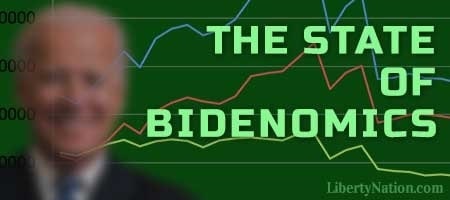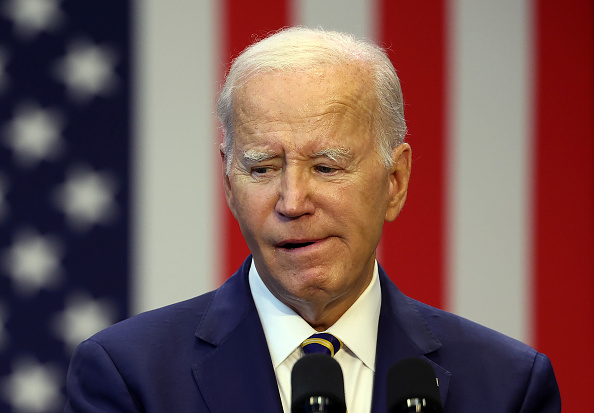The current administration promised that Bidenomics would give the American people a little bit of breathing room. After performing one-second half-jogs to podiums to deliver speeches filled with both whispering and screaming, President Joe Biden repeatedly insisted that his anti-trickle-down economics prescriptions would result in “the middle out and bottom up.” Well, after more than two years, conditions seem to be deteriorating fast, with the middle being squeezed and the bottom squashed.
Bidenomics Results
In 2022, inflation-adjusted income declined, and poverty increased for the first time in more than a decade, says the US Census Bureau. The annual “Income, Poverty and Health Insurance Coverage in the United States” report published on Sept. 12 reported that real median income failed to keep up with the 7.8% spike in consumer prices, tumbling by 2.3% to $74,580, down from $76,330 in 2021. This represented the sharpest drop since 2010. “Householders under the age of 65 experienced a decline in median household income of 1.4% from 2021, while householders aged 65 and over did not experience a significant change in median income between 2021 and 2022,” CB researchers wrote.
The Supplemental Poverty Measure (SPM) rate, which assesses post-tax income and consists of government-transfer payments like stimulus checks, was 12.4% in 2022, up 4.6 percentage points from the previous year. This was the first jump since 2010. For children, the SPM rate skyrocketed to 12.4%, up from 5.2%. CB officials note that the expiration of pandemic-era programs, like the Child Tax Credit, largely fueled this.
 Ninety-two percent of the US population possessed health insurance coverage, up from 91.7% in 2021. Nearly 26 million Americans, or close to 8%, did not have health insurance at any point in 2022.
Ninety-two percent of the US population possessed health insurance coverage, up from 91.7% in 2021. Nearly 26 million Americans, or close to 8%, did not have health insurance at any point in 2022.
As was expected, the White House tried to spin the Census study, arguing that the findings underscored a message of “inclusive tax and health care policies in tandem with tight labor markets and a strong overall economy.” President Biden added in a separate statement: “Today’s Census report shows the dire consequences of congressional Republicans’ refusal to extend the enhanced Child Tax Credit, even as they advance costly corporate tax cuts.”
Why Isn’t Bidenomics Popular?
Administration officials and left-leaning figures are stumped about why Bidenomics is unpopular with US voters. Keynesian economist Paul Krugman recently asserted in a CNN interview that partisanship is masking the doctrine’s success. “Even optimists are just stunned by how quickly and how painlessly inflation has come down,” he told the cable news network, adding that the economy is not as “disastrous” as the public thinks.

(Photo by Kevin Dietsch/Getty Images)
This type of attitude is likely shared by many residing in the Swamp. But, comparable to what William F. Buckley said about it being better to be governed by the first 100 people in the Boston phone book than the Harvard faculty, the average person’s experience is far more telling than a random data point in the consumer price index. As Liberty Nation has reported this summer, the polling data show that the supposed successes of Bidenomics are not being felt. In a recent CNN survey found that 58% of adult respondents think President Biden’s policies have worsened the economic landscape.
But the talking heads on CNN and MSNBC will tell viewers that they never had it so good.
Here Comes the Pain
These perilous times will likely be exacerbated over the next year, too. The Federal Reserve’s higher interest rates are still traveling through the economy, households’ pandemic-era savings are close to being fully exhausted, and price inflation is showing signs of reaccelerating. At this stage, it is a moot point if the US slides into a recession because families are already hurting as if the nation were in a downturn. As author Graham Greene wrote in The End of the Affair, “The sense of unhappiness is so much easier to convey than that of happiness.”

